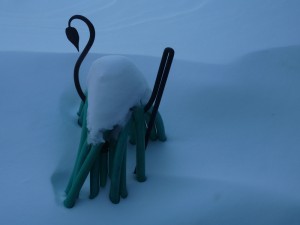Beltane Solstice Moon
Becoming a horticulturist takes time. Time learning plants, learning pests, learning flowers  and vegetables and fruit. Learning soil, chemicals. Time with hands in the soil, with seeds and transplants and irrigation. It takes failure. Those tomatoes with the yellow leaves. The potato leaves shredded by the Colorado beetle. Over mulching that garlic. (which I did this year.) It’s been a long time now since I started down this ancientrail. Slow at first. That garden at the Peaceable Kingdom. Heating with wood there, too.
and vegetables and fruit. Learning soil, chemicals. Time with hands in the soil, with seeds and transplants and irrigation. It takes failure. Those tomatoes with the yellow leaves. The potato leaves shredded by the Colorado beetle. Over mulching that garlic. (which I did this year.) It’s been a long time now since I started down this ancientrail. Slow at first. That garden at the Peaceable Kingdom. Heating with wood there, too.
Small efforts on 41st Avenue in Minneapolis and Sargent Avenue in St. Paul. Some more on Edgcumbe Road. Mostly flowers. Then this property. We hired a landscape architect who laid in the first beds, added some elevation changes, planted the first plants, designed the early iteration of irrigation and rolled out the new lawn. After that I learned about perennials, trying to get a seasonal symphony, color throughout the growing part of the year.
There was that two year correspondence course from the University of Guelph in London, Ontario. It was good, laying down the conceptual basis for much of the work, though I feel I’ve under utilized what I learned in it. Anyhow I have a A.A. degree in horticulture as a result.
Kate started planting vegetables; I focused on flowers. Somewhere in there I cut down the locust, as I said a while back. Bought a big roto-tiller and tried the traditional surface of the earth garden. Not good. Got the raised beds. They helped a lot by keeping grass and other things out of the soil.
That permaculture business made sense to me. Design your gardens, your whole home around the way nature lays out the land in your area. Become one with the land and use it to your advantage while giving back to it. We’ve done some of that but I think it would have been better years ago, when we were just starting, still young enough to have the personal strength to work it. It’s very complex and required more learning than I felt like giving it.
Now I’m focused on the bio-dynamic agriculture and horticulture of International Ag Labs. I would characterize my approach as pragmatic and eclectic, trying to integrate material from the traditional world, like the Guelph course, the more theoretical models like permaculture, organic and ag labs into usable information for our property. There is just one permanent goal: improve the land while providing ourselves with nutrient rich food.
The land and the plants will teach if you see what you’re looking at. I’m still learning the language of our land.
